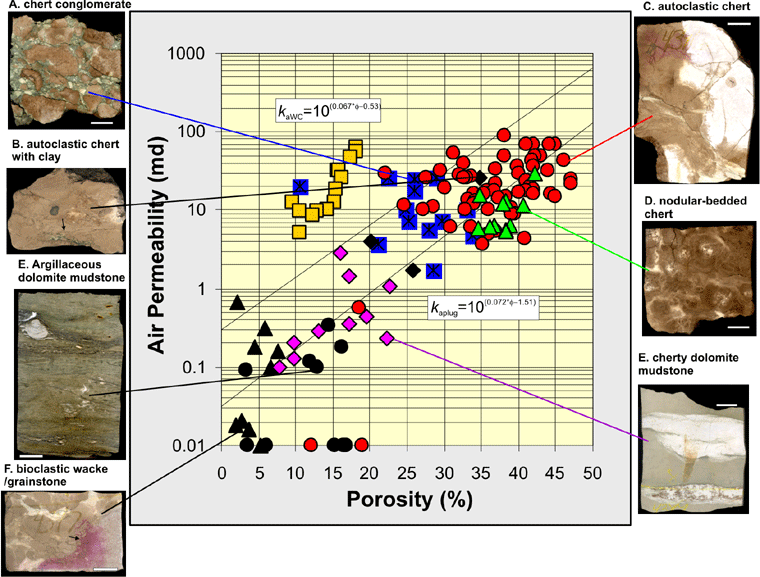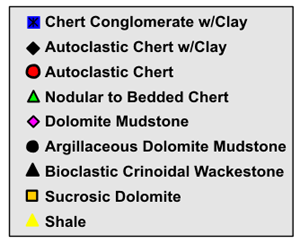Mississippi “Chat”
Porosity and Permeability
Figure illustrates the log-linear relationship between routine air permeability
(ka) and routine porosity (![]() a).
Each of the Chat lithofacies generally occupy a unique porosity-permeability
region. Porosity in the Chat matrix is approximately 15+5%. Porosities grater
than ~20% are largely due to sponge spicule mold content. Note that with almost
a doubling of porosity (e.g. 20 to 40%) permeability increases are less than
a factor of ~5.
a).
Each of the Chat lithofacies generally occupy a unique porosity-permeability
region. Porosity in the Chat matrix is approximately 15+5%. Porosities grater
than ~20% are largely due to sponge spicule mold content. Note that with almost
a doubling of porosity (e.g. 20 to 40%) permeability increases are less than
a factor of ~5.
Autoclastic cherts exhibit the maximum porosity and permeability with porosities ranging from 25-50% and permeabilities >5 md. Permeability variance within this lithofacies at any given porosity can be attributed primarily to:
- sponge-spicule mold content
- small vug content, believed to result from both sponge-spicule dissolution and dissolution of microporous chert
- enhanced porosity development at clast boundaries
- circum- and intraclast microfracturing.
At any given porosity the nodular to bedded chert facies exhibits permeabilities approximately a factor of 2 less than the autoclastic chert facies. The lower permeability of this facies appears to be related to lower vug content, less porosity development at clast boundaries, and an absence of circum-clast microfracturing. The cherty dolomite mudstones, and argillaceous dolomite mudstones can exhibit porosities up to 22% but due to the small grain and pore size, display routine air permeabilities of less than 1md. The development of sucrosic dolomites at Bates Field does not result in a significant increase in porosity above that found in dolomite mudstones, but results in permeabilities that are two orders of magnitude greater.


|
|
e-mail : webadmin@kgs.ku.edu
Last updated May 2003
http://www.kgs.ku.edu/PRS/publication/2003/ofr2003-32/P2-08.html
